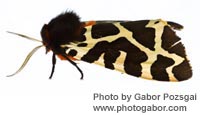 This page has been mothballed.
This page has been mothballed.
It is no longer being updated but we've left it here for reference.
Briefing Paper 2 for the Scottish Executive on Progress with a "New Image of Scotland" Project.
A seminar was held at The Scottish Office at Victoria Quay, Edinburgh, on 7th July 1999 on the creation of a "New Image of Scotland".
The aim of the "New Image of Scotland" project is to create an up-to-date high-resolution map-related image of the entire land area of Scotland that can be easily accessed and available in digital form. The purpose of the seminar was to introduce the project, outline some of the key technical innovations and their potential benefits, and to present an outline costed business case for taking the project forward in the year 2000.
The origins of this project stem from the proposed update of the Land Cover of Scotland.
A thorough review, exploring the potential of an update of the Land Cover of Scotland, identified that the primary data source - the aerial photography - was a key resource to a wide range of public organizations. Furthermore duplication of data by organizations under the SO umbrella is relatively common (e.g. SNH, FC). This work has led to the view that aerial photography is a key shared resource and would benefit from improved management. Improved technology associated with aerial photography -ortho-rectified digital imagery, allows this key resource to add direct value to digital mapping (already in place through a Scottish Office consortium Service Level Agreement with OS) and other digital geo-referenced data sets in use by many Scottish Office departments.
The Way Forward.
A consortium of key departments from the Scottish Office 'umbrella' will be invited to take part in determining the details of the way forward. Outline costs spread over a 5-year period of c. £1m or c. £2.25m have been identified, depending on the model adopted. These costs can be defrayed between consortium members and sales to users in the public and private sector. The actual cost to departments will depend on the number of key players that are prepared to sponsor the setting up of the project and the nature of the public/private partnership. Some departments may be able to identify cost savings as this project would save repeat aerial survey and some field checking projects. Sponsors who commit at the start of the project can expect cost advantages.
Model 1: a small consortium of core SO bodies who fund aerial photograph acquisition partnership with a Commercial Company
Model 2: Large consortium partnership with a Commercial Company
Model 3: A tri-partite consortium of core SO bodies, a commercial company and Ordnance Survey
Summary Information
Scotland has a small population relative to a large landmass. It is a country therefore that values the land. Geographic data is fundamental to understanding issues relating to the land and its people
Scotland has a new political structure. Innovative and enlightened policy making is based on good information
80% of government data is geographically referenced. Digital images give easy access to non-specialist users and give instant added value to their analysis of government data
Geo-referenced air photography can be used to enhance a spatial data product, such as LandLine, to allow data integration ground truthing and data capture from the office. This is especially useful in rural areas where the mapping is now inadequate for many purposes. Some of the potential key applications are in Agricultural Policy as a link to IACS, Area Payments, Countryside Premium Scheme, and Natural Heritage with links to Environmental Audits, Bio-diversity, Natura 2000. There are also wider uses for such integrated spatial data including links to Population and Environmental Censuses, enabling assessments of Socio-economic and Environmental Sustainability.
Geo-referenced imagery can be used by local government, by utilities and other public and private bodies. It can be used educationally in schools and higher education.
Through this project, geo-referenced air photography can be seen as a multi-purpose national resource that can be made available locally
This project is an opportunity to achieve joined up data in support of joined up government.
- The current state of GIS technology allows data to be:
- integrated - including maps, imagery and real-time sensing (e.g. traffic, pollution and environmental monitoring);
- communicated via the internet, intranet, etc.; and
- current developments to be applications (rather than method) driven.

